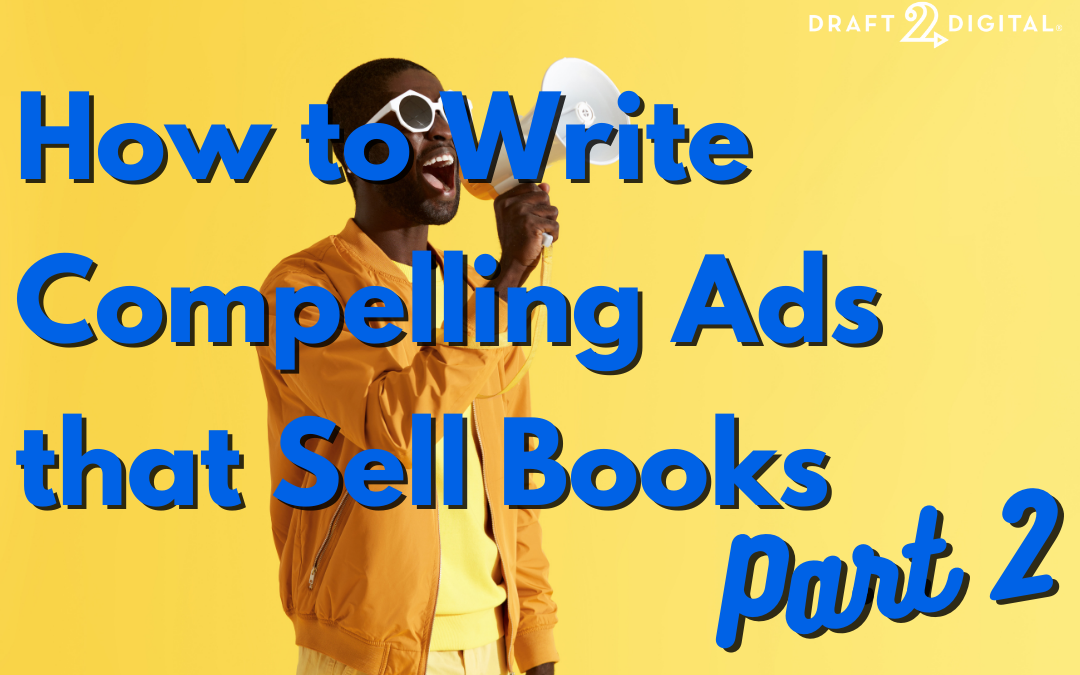If you haven’t read Part 1 of this series yet, go back and check it out! We’re sharing the best ways to make your indie author ads stand out in a crowd.
Let’s jump right in!
Make your ad copy “sticky”
This might sound odd, but in marketing, the term “sticky” just means memorable. You want someone to see your ad once and leave their screen with your words ringing in their brain.
The easiest way to do that is to make it resonant. Use alliteration, rhymes, or riffs on common expressions to appeal to a reader’s ear. Kevin Tumlinson shared the example of using the tagline “Get your ship together” to market a sci-fi series omnibus back in the day, and it stuck so well that people still quote it to him years later!
In other words, never underestimate the power of wordplay. There’s a reason why certain business names and taglines are so darn sticky. Think about the slogans and ads that stand out in your memory and why they appeal to you.
In general:
- They’re short and easy to remember and understand: “Just do it”
- They speak directly to a benefit: “Bet you can’t eat just one”
- They rhyme: “Hello Moto”
- They use alliteration: “Intel Inside”
Obviously, your ads don’t have to fit all or even one of these guidelines—but using them can help your words stand out and resonate in your prospective readers’ minds.
Don’t get too caught up in cleverness, though. Remember that your ad also needs substance. You should communicate clearly why someone should read your book, set your work apart from other books they’ve read before, and—ideally—leave them with questions they’re dying to know the answers to.
Give specific examples in your ads
Explanations should always be secondary to examples. Explaining versus illustrating (also known as telling versus showing) tends to confuse and go on too long. And the more we talk, the less interested our audience becomes.
Sam shared a story about an oil tanker that caught fire off the coast of Hawaii. A passing cruise ship saved everyone on board, but afterward, at a press conference, the captain could only think about his dog. He said he was grateful he and his crew were rescued … but his dog was still onboard the tanker.
That press conference went viral, and money started pouring in from around the world. The United States Navy changed the exercise area of the Pacific fleet to search for the drifting, abandoned oil tanker. When they found it, the dog was still onboard, racing up and down the deck. (And yes, the dog was brought safely back to shore!)
The point this story illustrates is how thoroughly we can identify with one individual and one compelling story as compared to a generalized description of a widespread issue. Thousands of people go without food, water, and shelter every day, but it’s easier to get people fired up over saving one dog with the right story. We call this the “empathy telescope,” and it means we can put ourselves in the shoes of one person, not in the shoes of many.
For writers, this means that specific stories are more compelling than general ideas. So what’s your dog on a tanker story?
Put readers in the shoes of your protagonist and their hero’s journey. Tell the story from their point of view in a relatable way and you’ll hook readers far better than if you over-explain a premise. This is particularly important for nonfiction books, where the tendency is to try to sweep readers away with big ideas from the jump.
Turn a No into a Yes
Finally, put yourself your prospective reader’s shoes. What are they thinking? What do they want?
Presenting an ad to a reader is like making a sales pitch, except that you only have a few seconds to grab their eye and they have no obligation to pay attention. Good design is part of this, so make sure to notice the designs that get traction in your genre.
From there, though, it’s all about your words. If a reader might say, “I’ve never heard of these characters,” or, “I tried this kind of book before and didn’t like it,” beat them to that thought and grab their attention by saying it first. Say, “Get ready to meet the next character you’ll fall in love with,” or “You’ve never read a [genre] book like this.” Beating a reader to their objection immediately grabs their attention and gives you an opening to convince them to give you a chance.
Another rule of thumb is to make the most of someone’s time. If your ad is longer-form copy or a video, get to the point as quickly as you can. Try not to stretch the experience out so long that people lose patience.
Finally, make objections moot. If a physical bookstore near you declines your offer of a book signing, you can overcome that objection without arguing. Say something like, “I understand why you normally only allow signings by published authors. But I’ll fill seats at a time when you normally don’t have much traffic. I can promise that at least 30 people will buy books.” Make saying yes to your request an easy win for them. (Of course, make promises you can keep and be sure to follow through afterward.)
When you turn a No into a mutually beneficial Yes, magic happens.
That’s it from us—for now. What tricks do you use to make your ads compelling and attract new readers? Let us know in the comments below!
